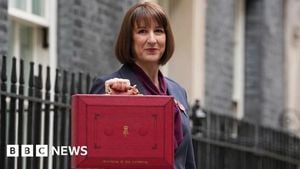In a region where alliances shift as quickly as desert sands, the aftermath of Syrian President Ahmed al-Sharaa’s recent White House visit has sent political shockwaves through the Middle East. Just ten days after becoming the first Syrian head of state to visit the White House since 1946, Sharaa has returned to a region simmering with tension, his newfound confidence stirring unease in Israel and beyond. The diplomatic overtures—complete with the Trump administration lifting a $10 million bounty on Sharaa and delisting his former group Hayat Tahrir al-Sham (HTS) from terrorist designations—have left Israeli leaders deeply wary, as reported by multiple outlets including Kan and The Washington Post.
Prime Minister Benjamin Netanyahu minced no words in a security cabinet meeting on November 20, 2025, describing Sharaa as “full of himself” and “puffed up” after the Washington encounter. According to Kan public broadcaster, Netanyahu warned that Sharaa is now “beginning to do all sorts of things that we won’t accept.” Chief among Israel’s concerns is intelligence that Sharaa is seeking to deploy Russian forces near the Israeli border in southern Syria—an area where Israel has maintained a military presence since the dramatic collapse of the Assad regime in December 2024.
The Israeli leader’s wariness is not without context. Just a month before his Washington trip, Sharaa visited Moscow, where a deal was brokered allowing Russia to keep its military bases in Syria. The Cradle reported that a high-level Russian delegation visited Quneitra province on November 17, 2025, with plans to expand Moscow’s military footprint by establishing nine strategic outposts near the Israeli border. Intelligence cited by the outlet indicated the restoration of Russian presence across key military sites in the Quneitra and Daraa countrysides—moves that have set off alarm bells in Jerusalem.
Defense Minister Israel Katz added a dose of sarcasm to the Israeli response, referencing Trump’s viral Oval Office gesture in which he sprayed Sharaa and his foreign minister with his signature fragrance. “Sharaa came back smelling of perfume,” Katz quipped, a comment widely mocked in Israeli media but loaded with political meaning. The perfume episode, captured on camera, has come to symbolize the Trump administration’s rapid warming to Sharaa, who only a year ago was better known as Abu Mohammad al-Jolani, a former jihadist leader.
Trump’s embrace of Sharaa has not been limited to symbolic gestures. The U.S. not only lifted the bounty on Sharaa’s head but also delisted HTS from terrorist designations at both the State Department and the UN. Trump praised Sharaa as a “strong leader” capable of stabilizing Syria and containing extremists, even floating the idea of a U.S. air base near Damascus and a Trump Tower in the Syrian capital. In an interview with The Washington Post, Sharaa said, “We found that Mr. Trump supports our perspective and intends to push quickly for a resolution,” emphasizing Syria’s demand for a security pact with Israel, contingent on a full withdrawal of Israeli troops from occupied southern territories, including Quneitra, Daraa, and Suwayda provinces.
But if Sharaa’s new status as an international partner has buoyed his confidence, it has also raised the stakes. The Israeli military has responded by escalating operations in southern Syria. According to The Syrian Observer and Syrian News Agency, Israeli Defense Forces intensified incursions into the region in late November 2025, including raising the Israeli flag atop Tell al-Ahmar in Quneitra before withdrawing. Israeli patrols entered multiple villages—Bir Ajam, Barikah, both hamlets of Zubeida, Ain Ziwan, and advanced towards Abu Qubais—without establishing checkpoints. These moves followed Netanyahu’s own inspection of the separation zone, accompanied by Defense Minister Katz, Foreign Minister Gideon Sa’ar, IDF Chief of Staff Eyal Zamir, and Shin Bet Director David Zini.
Israeli officials are not the only ones voicing concern. Syria’s ambassador to the UN, Ibrahim Olabi, condemned Netanyahu’s surprise tour of Israeli-held positions in southern Syria as a “provocative” violation of sovereignty. Several Arab capitals and the United Nations joined in the criticism, warning that such actions threaten to inflame an already volatile situation. The region has seen over 1,000 Israeli airstrikes and 400 ground incursions since Assad’s fall, according to Sharaa’s own tally from September 2025.
Far-right voices within Netanyahu’s coalition have gone even further. National Security Minister Itamar Ben-Gvir has openly called for eliminating Sharaa, labeling him the “head of the snake.” Such rhetoric underscores the deep mistrust that persists, even as the U.S. pushes for eventual Israel-Syria normalization. Netanyahu himself, invoking Ronald Reagan’s mantra, cautioned, “Trust, but verify.” He told his cabinet that Israel is “maintaining a degree of distance” in its engagement with Syria, suggesting that both sides would benefit from arrangements designed to prevent further friction. Yet, he made it clear that Syria has “an interest no less than Israel’s” in achieving mutually beneficial security understandings—a nod to the complex dance of deterrence and diplomacy now underway.
On the Syrian side, Sharaa has rejected Israeli calls for a permanent demilitarized zone south of Damascus, arguing it would allow Israel to use Syrian land as a “launching pad” for strikes. Instead, he has insisted on a security pact that requires Israel’s full withdrawal from territories occupied since December 8, 2024. The deadlock has left the region on edge, with both sides maneuvering for leverage amid ongoing military activity.
Meanwhile, the internal situation in Syria remains fraught. Despite Sharaa’s new international legitimacy, Syria continues to experience forced disappearances and abuses targeting Druze, Alawites, and Kurds, as reported by CounterVortex. These abuses point to the looming threat of an ethnic or sectarian internal war. The U.S. troop presence in Syria is still largely embedded among Kurdish forces in the east, and Sharaa’s emergence as an “anti-terrorist” partner for great powers has raised questions about whether these troops will be withdrawn—potentially giving Damascus a green light to move against the Kurdish autonomous zone.
Sharaa’s security forces have conducted raids against ISIS, raising the prospect of Syria being invited to join the US-led Global Coalition to Defeat ISIS. Yet, the transition process remains precarious, nearly a year after the fall of the Assad dictatorship. As the CounterVortex podcast noted, the risks at this critical moment are significant, not only for Syria’s internal stability but for the broader regional balance.
For now, the region waits. With Sharaa emboldened by U.S. support and Israel determined to defend its red lines, the next moves could either open a path to normalization—or spark a new round of conflict. The diplomatic perfume may have faded, but the scent of uncertainty lingers over the Golan and beyond.




